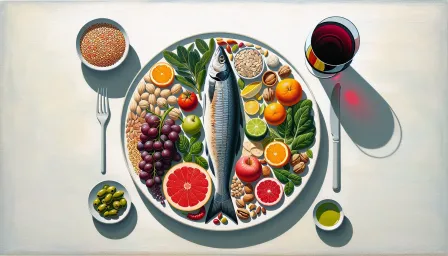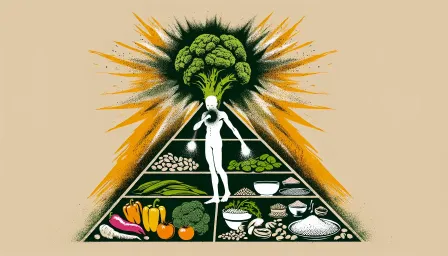The Ultimate Blood Type Diet Food List: What to Eat for Every Blood Type

Explore the ultimate Blood Type diet food list to discover what to eat for every blood type. Learn about the benefits and find valuable dietary solutions tailored to your blood type.
The Blood Type Diet, popularized by Dr. Peter D'Adamo, suggests that individual nutritional needs vary according to one's blood type. This dietary approach has drawn attention for its personalized aspect, claiming health benefits such as improved digestion and enhanced energy levels. In this article, we provide a comprehensive Blood Type diet food list and explore the specifics of what to eat for every blood type.
Understanding the Blood Type Diet
The Blood Type Diet is based on the theory that each blood type has unique characteristics that interact with dietary nutrients. Dr. D'Adamo's premise is that foods contain lectins that react differently with each blood type, affecting digestion, metabolism, and overall health. Here's a breakdown of the four blood types and how the diet tailors to each one:
- Type O: The hunter or meat-eater.
- Type A: The agrarian or vegetarian.
- Type B: The nomad or balanced omnivore.
- Type AB: The enigma or mixed diet.
Blood Type Diet Food List for Type O
What to Eat
Individuals with Type O blood purportedly thrive on a high-protein diet with a focus on animal proteins and minimal grains. Recommended foods include:
- Meat and Poultry: Beef, lamb, mutton, veal, venison.
- Fish and Seafood: Cod, herring, mackerel, salmon.
- Vegetables: Kale, spinach, broccoli, and seaweeds.
- Fruits: Plums, prunes, figs, and most berries.
- Nuts and Seeds: Walnuts and pumpkin seeds.
- Oils: Olive oil and flaxseed oil.
What to Avoid
For Type O individuals, certain foods might prove problematic. It's advised to avoid:
- Dairy: Most dairy products.
- Grains: Wheat, corn, and products made from these grains.
- Beans and Lentils: Kidney beans, navy beans.
- Vegetables: Eggplant, potatoes.
Blood Type Diet Food List for Type A
What to Eat
Type A individuals are suggested to follow a diet akin to vegetarianism, emphasizing organic and fresh whole foods. Key dietary components include:
- Vegetables: Broccoli, carrots, peas, spinach.
- Fruits: Apples, nectarines, berries, avocados.
- Grains: Rice, oats, buckwheat, amaranth.
- Legumes: Lentils, beans, soy products.
- Seafood: Cod, salmon, mackerel, sardines.
- Nuts and Seeds: Peanuts, pumpkin seeds, almonds.
- Oils: Olive oil.
What to Avoid
For Type A, certain foods can disrupt the dietary balance and are better avoided, such as:
- Meat: Beef, pork, lamb.
- Dairy: Most dairy products, especially whole milk and ice cream.
- Beans: Lima beans, kidney beans.
- Vegetables: Peppers, tomatoes, potatoes.
Blood Type Diet Food List for Type B
What to Eat
Type B individuals are thought to do well on a varied diet, including a balance of plant and animal proteins. These foods are beneficial:
- Meat: Goat, lamb, venison.
- Dairy: Low-fat dairy like milk, cheese, and eggs.
- Vegetables: Green vegetables, sweet potatoes, carrots.
- Fruits: Bananas, grapes, plums, pineapples.
- Seafood: Cod, salmon, sardines.
- Nuts and Seeds: Walnuts, flaxseeds.
- Grains: Oats, rice.
What to Avoid
Type B individuals may experience adverse effects from consuming certain foods, including:
- Poultry: Chicken, turkey.
- Beans: Lentils, chickpeas.
- Grains: Wheat, rye, corn.
- Vegetables: Tomatoes, corn.
Blood Type Diet Food List for Type AB
What to Eat
Type AB individuals benefit from a diet that includes a variety of foods, pulling from both Type A and Type B diet suggestions. Recommended foods include:
- Meat: Lamb, rabbit, turkey.
- Seafood: Tuna, salmon, sardines.
- Dairy: Yogurt, kefir, cheese.
- Grains: Millet, oats, rye.
- Vegetables: Green leafy vegetables, garlic, beets, broccoli.
- Fruits: Cherries, grapes, kiwi, watermelon.
- Nuts and Seeds: Chestnuts, peanuts, walnuts.
- Legumes: Soybeans, pinto beans, peanuts.
What to Avoid
Some foods may be less compatible with Type AB individuals and are better avoided:
- Red Meat: Beef, pork.
- Beans: Lima beans, kidney beans.
- Grains: Corn, buckwheat.
- Vegetables: Peppers, radishes.
Conclusion
The Blood Type Diet offers a specificity that can make dietary choices manageable and personalized. By abiding by the tailored food lists for each blood type—whether Type O, A, B, or AB—you may find an improvement in health, digestion, and overall well-being. However, it's crucial to consider individual health conditions and consult healthcare professionals before making significant dietary changes.



























